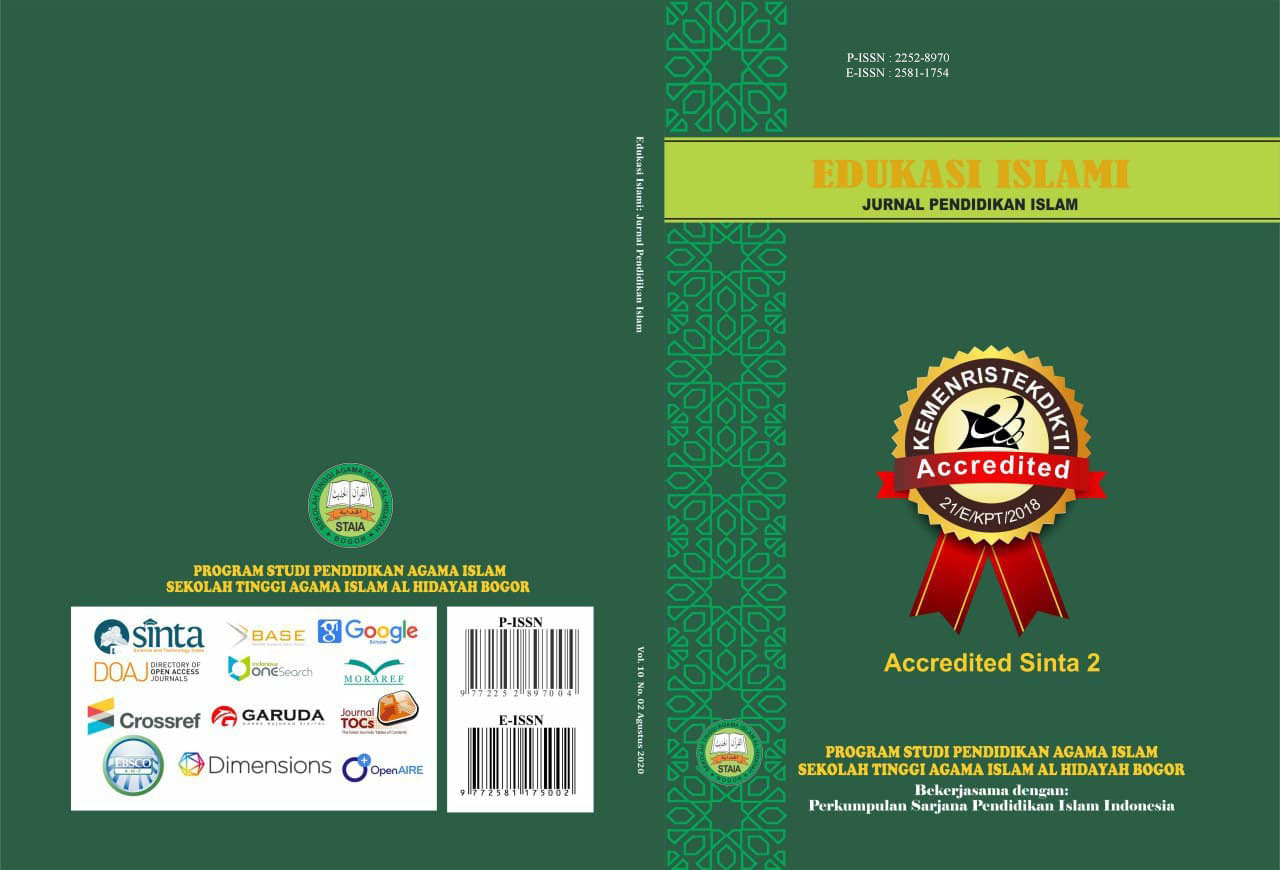Curriculum Innovation Management in MAN Middle Tapanuli District
DOI:
https://doi.org/10.30868/ei.v12i001.6183Keywords:
Management, Innovation, Curriculum, MadrasahAbstract
References
Baharun, H. Pendidikan Anak Dalam Keluarga; Telaah Epistemologis. Pedagogik, 2016.
Furchan, Arif. Transformasi Pendidikan Islam di Indonesia, Anatomi Keberadaan Madrasah dan PTAI. Yogyakarta: Gama Media, 2004.
H,A,Rusdiana, (2014), Inovasi Pendidikan, Bandung: Pustaka Setia
Hamalik, Oemar. Inovasi Pendidikan: Perwujudannya dalam Sistem Pendidikan Nasional, Bandung: PT. Permindo, 2005.
Hamalik, Oemar. Manajemen Pengembangan Kurikulum, Bandung: Rosdakarya, 2012.
Martinis Yamin dan Maisah,Manajemen Pembelajaran Kelas Strategi Meningkatkan Mutu Pembelajaran, (Jakarta: Gaung Persada, 2009)
Mundiri, Akmal dan Reni Uswatun Hasanah. Inovasi Pengembangan Kurikulum Pai Di Smp Nurul Jadid, Dosen Universitas Nurul Jadid Probolinggo Jawa Timur, Jurnal Tadrib, Vol. IV, No.1, Juni 2018
Muslimin, Nur. “Inovasi Kurikulum Dalam Upaya Meningkatkan Mutu Pendidikan (Studi Multi Kasus di MTsN Watulimo)â€, Jurnal Kementerian Agama Ri Kabupaten Trenggalek, Ta’allum, Vol. 04, No. 01, Juni 2016.
Syafaruddin dan Amiruddin, Manajemen Kurikulum, Medan: Perdana Publishing, cet I, 2007.
Syafaruddin dan Asrul, (2014), Manajemen Kepengawasan Pendidikan, Bandung: Citapustaka Medi
Syafaruddin, et.al., (2016), Ilmu Pendidikan Islam, Jakarta: Hijri Pustaka Utama, hal. 92-94.
T. Hani Handoko, (2009), Manajemen:Edisi 2, Yogyakarta: BPFE-YOGYAKARTA, hal. 25.
Downloads
Published
Issue
Section
Citation Check
License
Authors who publish with this journal agree to the following terms:
- Authors retain copyright and grant the journal right of first publication with the work simultaneously licensed under a Creative Commons Attribution License that allows others to share the work with an acknowledgment of the work's authorship and initial publication in this journal.
- Authors are able to enter into separate, additional contractual arrangements for the non-exclusive distribution of the journal's published version of the work (e.g., post it to an institutional repository or publish it in a book), with an acknowledgment of its initial publication in this journal.
- Authors are permitted and encouraged to post their work online (e.g., in institutional repositories or on their website) prior to and during the submission process, as it can lead to productive exchanges, as well as earlier and greater citation of published work (See The Effect of Open Access).









